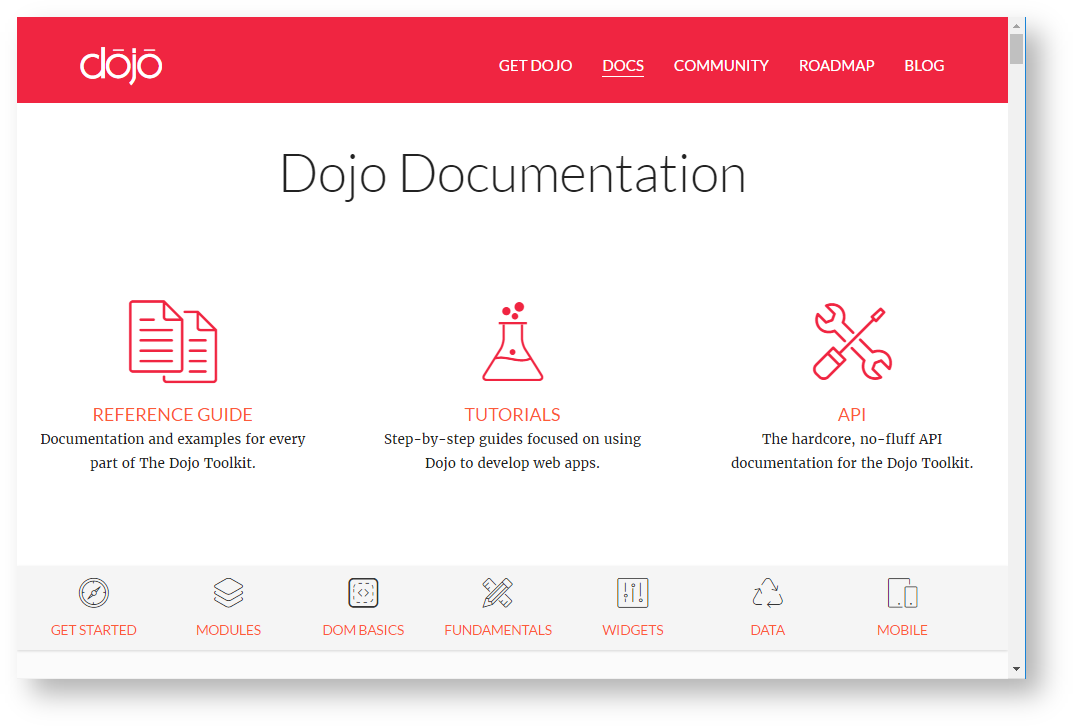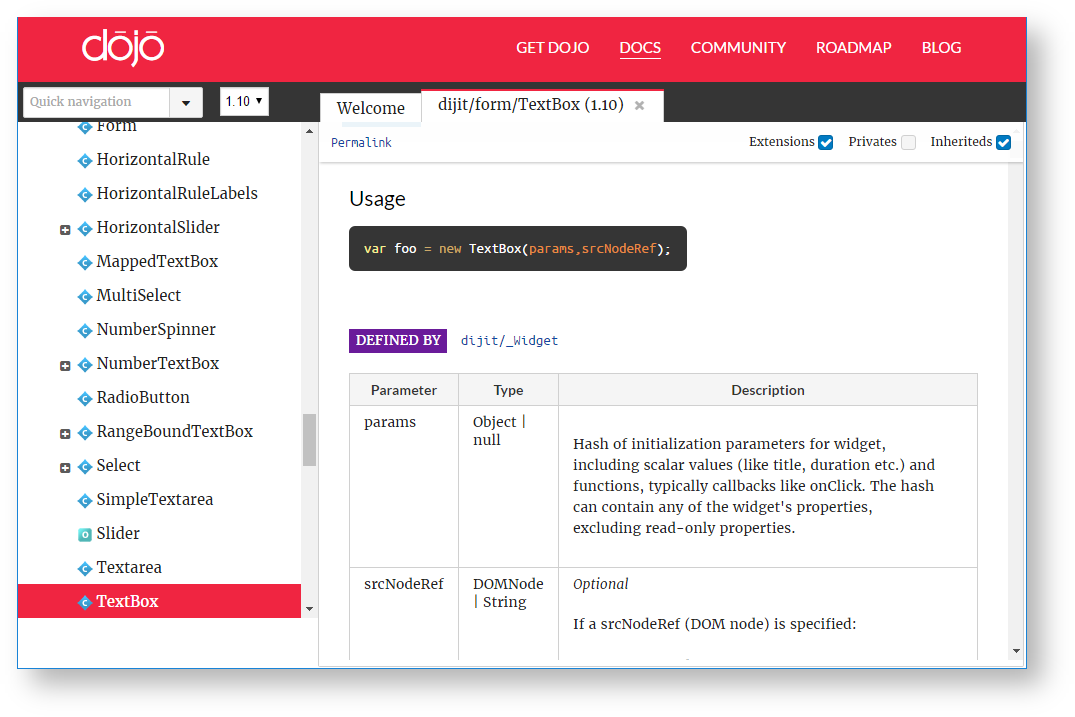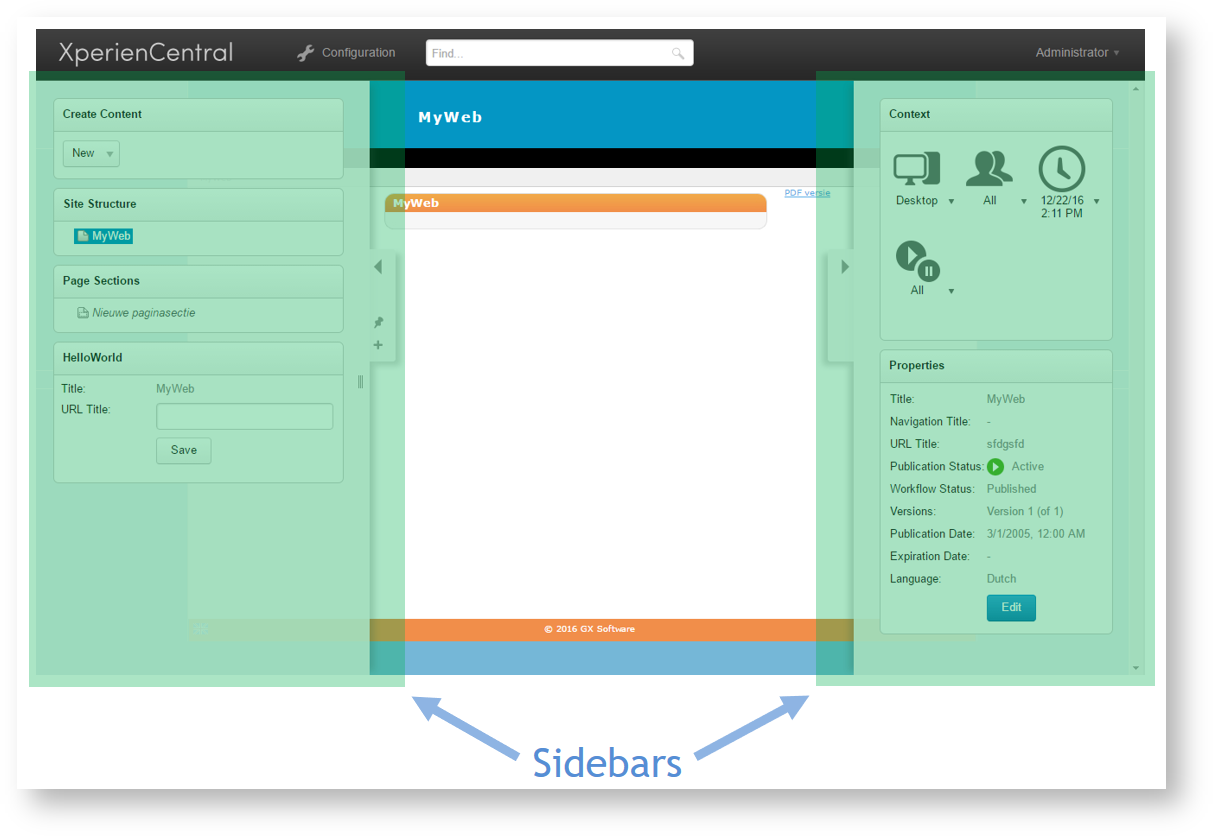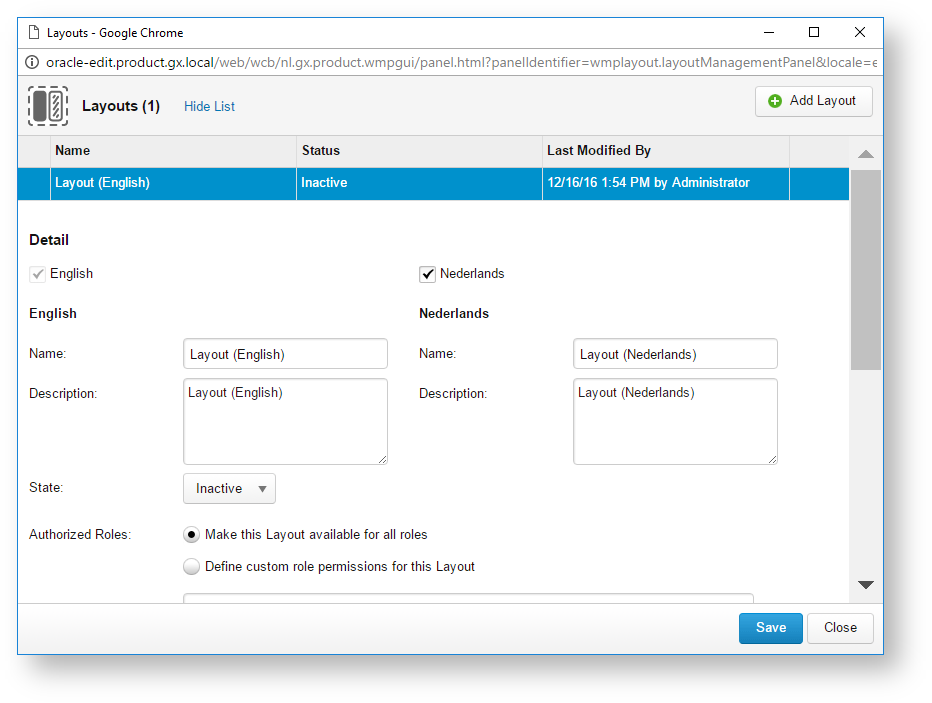XperienCentral widgets are plugins that contain a widget. A widget is an "element of interaction" in a user interface. Basic widgets can be buttons, input fields checkboxes and so forth. Widgets can be combined together to form more complex functionality, for example a widget consisting of multiple input fields, buttons and a radio box. The user interface in XperienCentral is written in JavaScript which makes use of a framework called the Dojo Toolkit, usually referred to as simply Dojo. Dojo defines a way of implementing these kinds of compound widgets using browser functionality such as HTML, CSS and JavaScript. Except for standard HTML tags, other widgets can be added in a similar fashion to build up new client-side components from the bottom up. The widgets used in a component can be standard Dojo widgets, 3rd party widgets, XperienCentral widgets or custom widgets. Dojo-based widgets are used throughout the XperienCentral user interface.
It is also possible to write custom code using this technique. The most common way to use widgets in custom code in XperienCentral is by adding new Sidebar widgets. It is also possible to create new interactive maintenance panels. A Sidebar widget is a visible component which can be docked in the left or right-hand Sidebar in the XperienCentral Workspace.
This section contains a topic on creating Sidebar widgets by beginning with an archetype which is provided as a starting point for development. The code generated by the archetype is explained in detail. The generated code is explained, including the Dojo toolkit basics, which will help you get started with your own development.
|
The client-side architecture introduced in XperienCentral makes it possible to add functionality to the Workspace using Dojo widgets. The advantave of this architecture is that you can add functionality which reacts to changes in the Workspace and Editor, such as when starting editing or viewing content. The figure below shows a depiction of the XperienCentral client-side architecture.
|
External references: Dojo / Data Stores in DOJO
The Dojo toolkit is an open source modular JavaScript library, or, more specifically a JavaScript toolkit which is designed for the rapid development of cross-platform, JavaScript/AJAX-based applications and websites. The following are examples of Dojo widgets you can develop:
|
There is a lot of documentation available on Dojo. If you’re not familiar with the Dojo toolkit, have a look at the tutorials. Another approach is to dive right into it by creating a sidebar widget based on the archetype and analyze the code using using the information available in the Developing Sidebar Widgets topic.
References:


There are two types of widget plugins in XperienCentral: Sidebar widgets and panel widgets. Sidebar widgets are widgets that can be docked in either the left or right Sidebar in the XperienCentral Workspace:

Sidebar widgets are described in detail in the Developing Sidebar Widgets topic, including how to create one using an archetype. Panel widgets are widgets that can be opened via a menu item in the Configuration menu, such as the Layout panel:

At this time there is no archetype or specific documentation for creating custom panel widgets. Contact your GX Software consultant for help in creating a new panel widget.
Keep the following in mind when planning the composition of Dojo widgets:
Avoid using experimental widgets as much as possible. The DojoX package was originally intended for this purpose.